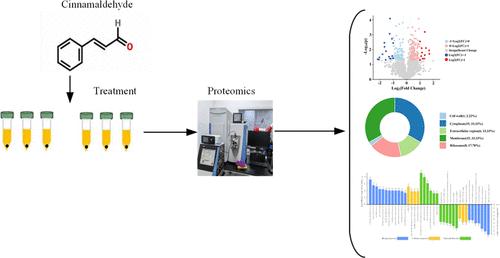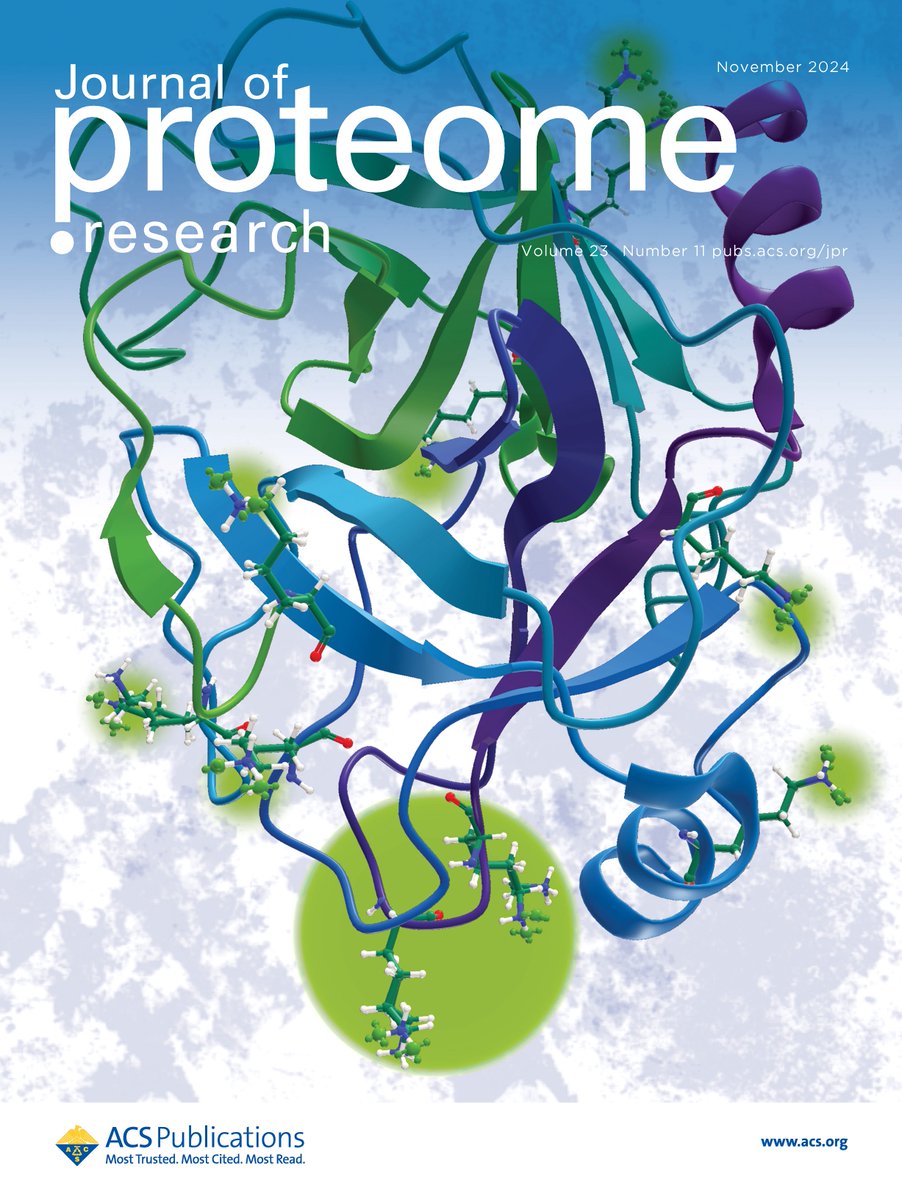基于 TMT 的定量蛋白质组学揭示了肉桂醛对 MRSA 的抗菌机制
IF 3.6
2区 生物学
Q1 BIOCHEMICAL RESEARCH METHODS
引用次数: 0
摘要
天然植物提取物在替代抗生素疗法方面已显示出巨大的潜力。肉桂醛(Cinnamaldehyde,CA)作为一种天然抗菌剂受到了广泛关注。本研究采用串联质量标签(TMT)定量蛋白质组学结合 Western 印迹和 RT-qPCR 方法,从蛋白质水平探讨了肉桂醛对耐甲氧西林金黄色葡萄球菌(MRSA)的抗菌机制。结果表明,对照组和 CA 治疗组共有 254 个差异表达蛋白(DEPs),其中 161 个显著上调,93 个显著下调。与核苷酸合成、内环境平衡和蛋白质生物合成有关的DEPs明显上调,而与细胞壁、细胞膜和毒力因子有关的DEPs明显下调。GO和KEGG富集分析结果表明,CA可通过影响丙酮酸代谢、三羧酸(TCA)循环、茶酸生物合成和金黄色葡萄球菌(S. aureus)感染途径来发挥其抗菌作用。CA 能明显抑制重组蛋白 MgrA 的表达(p < 0.05),明显降低 mgrA、hla 和 sdrD 基因的 mRNA 转录水平(p < 0.05),热稳定性迁移试验表明 CA 能直接与 MgrA 蛋白相互作用,从而抑制其活性。这些研究结果表明,CA通过调节相关蛋白的表达来发挥其抗菌作用,为进一步开发天然植物精油抗菌剂在治疗奶牛乳腺炎中的临床应用提供了理论依据。本文章由计算机程序翻译,如有差异,请以英文原文为准。

TMT-Based Quantitative Proteomics Revealed the Antibacterial Mechanism of Cinnamaldehyde against MRSA
Natural plant extracts have demonstrated significant potential in alternative antibiotic therapies. Cinnamaldehyde (CA) has garnered considerable attention as a natural antibacterial agent. In this study, Tandem mass tag (TMT) quantitative proteomics combined with Western blot and RT-qPCR methods were employed to explore the antibacterial mechanism of CA against Methicillin-Resistant Staphylococcus aureus (MRSA) at the protein level. The results showed that a total of 254 differentially expressed proteins (DEPs) were identified in the control group and CA treatment group, of which 161 were significantly upregulated and 93 were significantly downregulated. DEPs related to nucleotide synthesis, homeostasis of the internal environment, and protein biosynthesis were significantly upregulated, while DEPs involved in the cell wall, cell membrane, and virulence factors were significantly downregulated. The results of GO and KEGG enrichment analyses demonstrated that CA could exert its antibacterial effects by influencing pyruvate metabolism, the tricarboxylic acid (TCA) cycle, teichoic acid biosynthesis, and the Staphylococcus aureus (S. aureus) infection pathway in MRSA. CA significantly inhibited the expression of recombinant protein MgrA (p < 0.05), significantly reduced the mRNA transcription levels of mgrA, hla, and sdrD genes (p < 0.05), and thermostability migration assays demonstrated that CA can directly interact with MgrA protein, thereby inhibiting its activity. These findings suggest that CA exerts its antibacterial mechanism by regulating the expression of related proteins, providing a theoretical basis for further development of clinical applications of antimicrobial agents derived from natural plant essential oils in the treatment of dairy cow mastitis.
求助全文
通过发布文献求助,成功后即可免费获取论文全文。
去求助
来源期刊

Journal of Proteome Research
生物-生化研究方法
CiteScore
9.00
自引率
4.50%
发文量
251
审稿时长
3 months
期刊介绍:
Journal of Proteome Research publishes content encompassing all aspects of global protein analysis and function, including the dynamic aspects of genomics, spatio-temporal proteomics, metabonomics and metabolomics, clinical and agricultural proteomics, as well as advances in methodology including bioinformatics. The theme and emphasis is on a multidisciplinary approach to the life sciences through the synergy between the different types of "omics".
 求助内容:
求助内容: 应助结果提醒方式:
应助结果提醒方式:


